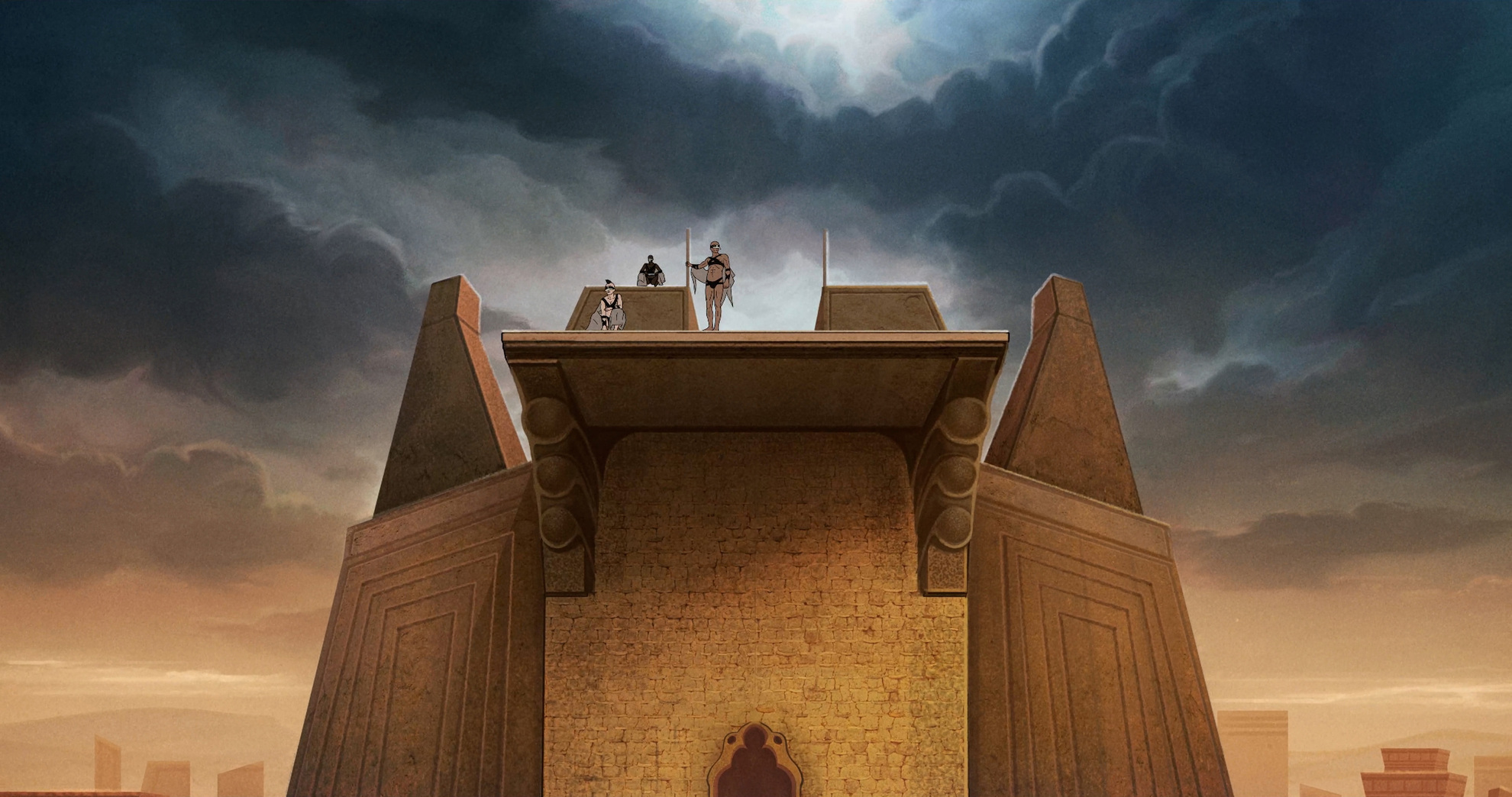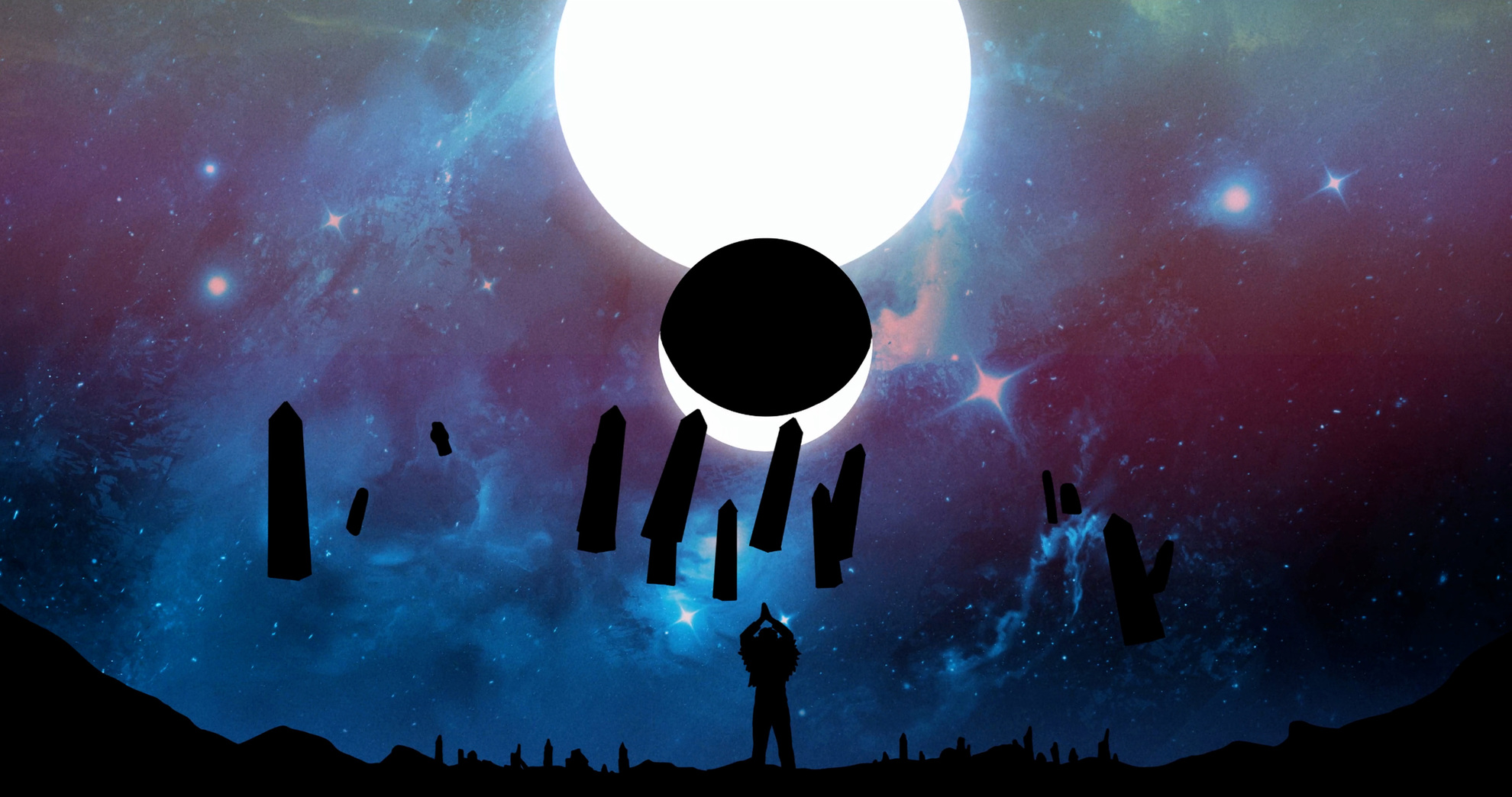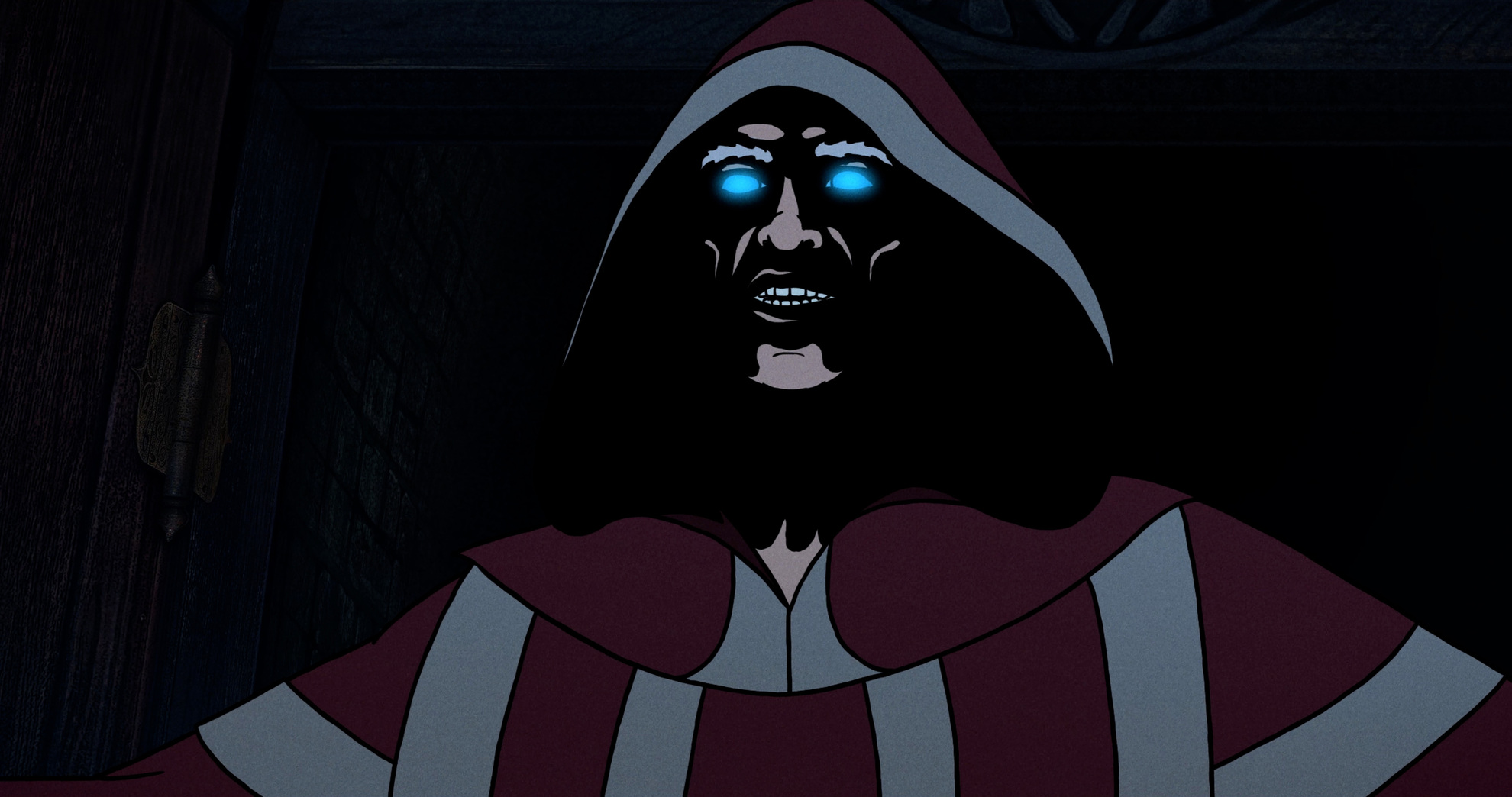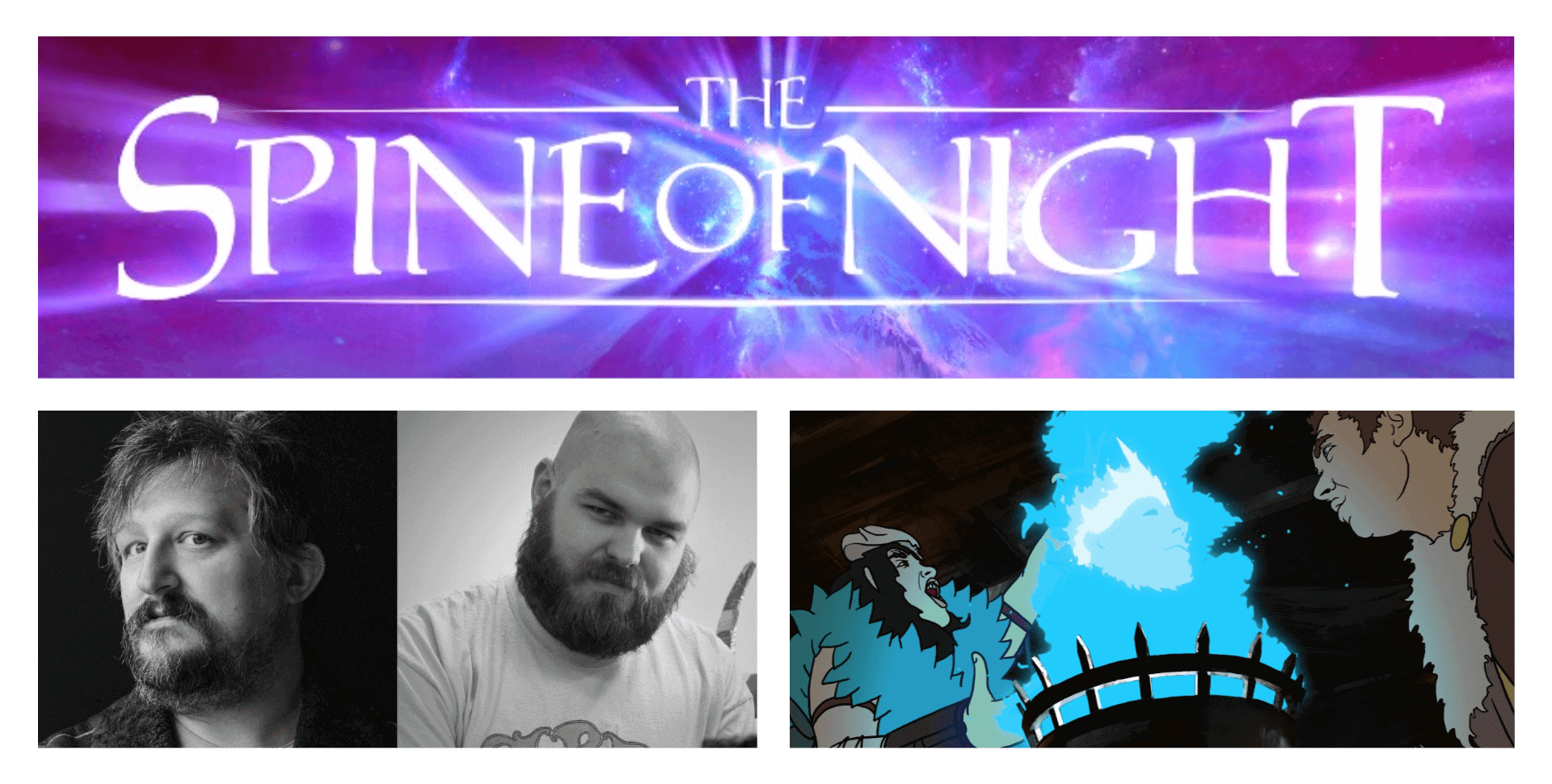The Spine of Night is the 2021 dark fantasy animation film written and directed by Philip Gelatt and Morgan Galen King. The uber-violent epic fantasy film follows multiple characters who battle against a powerful and malevolent force — stars the voice talents of Richard E. Grant, Patton Oswalt, and Lucy Lawless.
Borrowing Tape had the opportunity to interview the filmmakers of The Spine of Night — Philip Gelatt and Morgan Galen King. The film is available on VOD, Digital HD, and cinemas on October 29, 2021.
The visual storytelling in featured The Spine of Night was highly engaging — it's a brilliant film. What was the inspiration for the idea and storyline of the movie?
M: Thank you! It’s so hard to say where ideas come from. I suppose I wanted to merge the philosophical and political ideas that were on my mind with the kind of weird fantasy and horror I’ve always gravitated to. Fantasy, in particular, is so intertwined with heroic, royalist, and individualist narratives that pushing into a more collective and era-spanning structure was appealing to me. I’m also a huge fan of Walter M. Miller Jr’s “A Canticle for Leibowitz,” and the unconventional structure of that epoch-jumping narrative form felt like the perfect approach to emphasize the smallness of the characters in contrast with the vastness of the cosmos.
Can you tell us about the screenwriting/storyboarding process for The Spine of Night?
M: In the 10 months I’d spent animating the previous short film, Exordium, I had ample time to think about the world of that film, and its themes, so when Phil and I started working on the screenplay, I had a lot of rough ideas that we were able to draw on. I found it to be a really rewarding collaborative process. As far as storyboarding, we went into some sections with every shot boarded like how you see it in the film, but for most of the film, we wanted to preserve the flexibility of working with live-action, so often the storyboards were more of a loose guide. I think that improvisational quality is part of what makes Bakshi’s work so dynamic, and is part of the joy of working with actors on set that makes rotoscoping such an interesting medium.
P: As Morgan says, the screenwriting process was very organic. Moving from Morgan’s raw ideas to script was very smooth and we were very lucky to have both great storyboard artists and great motion reference actors to work with.

This question is directed to Philip Gelatt - Did any of your experience writing 15 episodes of the series “Love, Death & Robots” influence you on tackling “The Spine of Night”?
P: That is a great question but, in fact, because of the great length of time it took us to finish “The Spine of Night” I had already written and shot all the live-action references for that project before starting work on “Love, Death & Robots.” So, if anything, “Spine” might have influenced “Love, Death & Robots.”
The film features the voice talents of Richard E. Grant, Lucy Lawless, and Patton Oswalt. What was the voice casting process like for “The Spine of Night”?
M: It’s a genuinely astounding line-up to me - I never dreamed we’d be able to work with such esteemed voice talents. Casting and recording them was mainly Phil’s territory.
P: When we reached the phase of the film when we were casting the voices, we approached people we thought would get that project. Joe Manganiello has a well-documented love of fantasy, Patton Oswalt is a self-identified nerd. And of course, Lucy Lawless is genre royalty! We were extremely lucky that they all saw the film and immediately wanted to do it.
Richard E. Grant is the odd man out here. I still don’t know if Richard is a nerd or not I just love him. I love him in everything from “Withnall & I” to “Hudson Hawk” to “Bram Stoker’s Dracula” to “Gosford Park”. I mean… what a career! So so so glad we got to work with him.

Can you tell us about working on the score with Composer Peter Scartabello?
M: It gives me chills, still, even though I’ve heard it countless times. I love it. Phil worked with Peter more directly.
P: I’ve known Peter for a few years, but we’d never worked together. So when Morgan and I started searching for a composer, I thought his sensibility might be just right for certain sections of the film. Luckily, he was into it. Working with him was great. I showed him the film first, and we had a discussion about each scene. Usually, those discussions centered around instrumentation, mood, and emotion. I’d say emotion was the biggest thing we discussed as I really wanted to make sure audiences were welcomed into the feeling of the film. Then he took it away from there. It is one of the great pleasures of filmmaking to send an artist, or musician in this case, off to do what they do best and be able to trust they will come back with something great. Peter never failed to impress.
“The Spine of Night” executes the rotoscope technique, where artists hand-draw over live-action footage frame by frame. Can you tell us the inspiration for this creative choice?
M: While the style had fallen out of fashion a while ago, I grew up in the era where it was still at its peak, so I’ve always loved the look and feel of it, and always felt it had a lot more potential to be explored. It was what I was attracted to when making Fantasy short films in my living room, and when Phil and I were envisioning The Spine of Night, we couldn’t really imagine the film working like we wanted it to in another animation style. It’s a very time-consuming approach to do by hand — like we did it, but there’s a lot of emergent technology on the horizon that will hopefully make it easier for anyone ambitious enough to attempt it again. I think the style is appealing because it gives you the flexibility of animation, but keeps the characters firmly in the realm of understandable physicality. That means they don’t bounce back like a cartoon or shrug off mortal injury like in so much anime, so I think that lends itself really well to the kind of horror violence that we wanted to deploy here.
Can you tell us about your favorite scenes from The Spine of Night and why?
M: My favorite scene will always be the young lovers, Dae and Gull, sleeping out under the stars in the ruins of their village. I wrote it as a letter to my wife, and I love that there’s a small, personal moment that’s briefly given the stage amidst all the era-spanning conflict and cosmic-scale drama. There’s also a melting scene towards the end of the film that was easily the most gruesomely enjoyable thing I‘ve ever animated, so that’s a real highlight for me, too.
P: My favorite scene is the two necromancers scene. It takes place in the dungeon of the library. It’s a scene for me where everything really comes together — the acting, the animation, the writing it just works. It’s among my favorite scenes I’ve ever worked on. I’m also extremely partial to the film’s two finales. But I won’t say more about that here, just see the film so you too can ponder if gods also suffer.

The adult animated works of Frank Frazetta and Ralph Bakshi — particularly Fire and Ice (1983) come to mind when seeing The Spine of Night. Which films/directors have influenced you for The Spine of Night, and also as a filmmaker?
M: Bakshi’s rotoscoped work, for sure, and the ‘Taarna’ segment that closes out Heavy Metal, were major stylistic guideposts. I think you can see the kind of arch Fantasy like in Ridley Scott’s Legend or John Boorman’s Excalibur? And of course John Milius’s Conan the Barbarian, the 1981 Clash of the Titans, The Beastmaster, and that whole era of Fantasy films. There's a lot of nods to Horror classics in there too — Evil Dead, Dead Alive, Hellraiser, Creepshow 2, and the like. I’m sure there’s a lifetime of influence from films I love that have crept in there unknowingly - animation directors like René Laloux, Yoshiaki Kawajiri, and Vladimir Tarasov surely all had an impact.
P: For “Spine” specifically, the 1982 “Conan: The Barbarian” was massively influential to me. That movie just feels how I think fantasy films should feel. It immerses the viewer in a perfectly designed fantasy world. It’s bombastic but also introspective. It’s philosophical but also bloody as hell. It has a pulse and passion. It’s fantastical storytelling for adults.
Which themes and subject matters interest you as a filmmaker?
M: On a fundamental level, the universe is unknowable, existence is absurd, and all our social hierarchies are man-made constructs, so imbuing genres that I love with that awareness is deeply interesting to me. Collective storytelling is anathema to the standard Hollywood heroic narrative formula that people have come to expect, especially in genre film, so that feels endlessly fertile to explore to me, too, even if audiences have to work a little harder to connect with it.
P: I’m largely on the same page as Morgan with this one though I’d add to it that I am captivated by the idea of individuals caught in the flow of history, struggling against a past that won’t die and a future that somehow won’t arrive. That to me is the essence of all of our lives.
Do you have upcoming projects you’d like to share with us?
M: Over the many years it took to finish animating The Spine of Night we had a lot of time to sketch out ideas for other stories that could be told in that same setting, so it kind of depends on how the film is received and much more of this world people want to see — I think we’ve got some really cool ideas for it, but we’ll see how things go. Beyond that, I’d like to do some live-action work that doesn’t take quite so long to complete as an animated feature — as an artist, I’d really value the opportunity to experiment and iterate in a way that 8-year projects aren’t conducive to.
P: There’s a third season of “Love, Death and Robots” coming! Other than that, a lot of things I can’t talk about yet.

